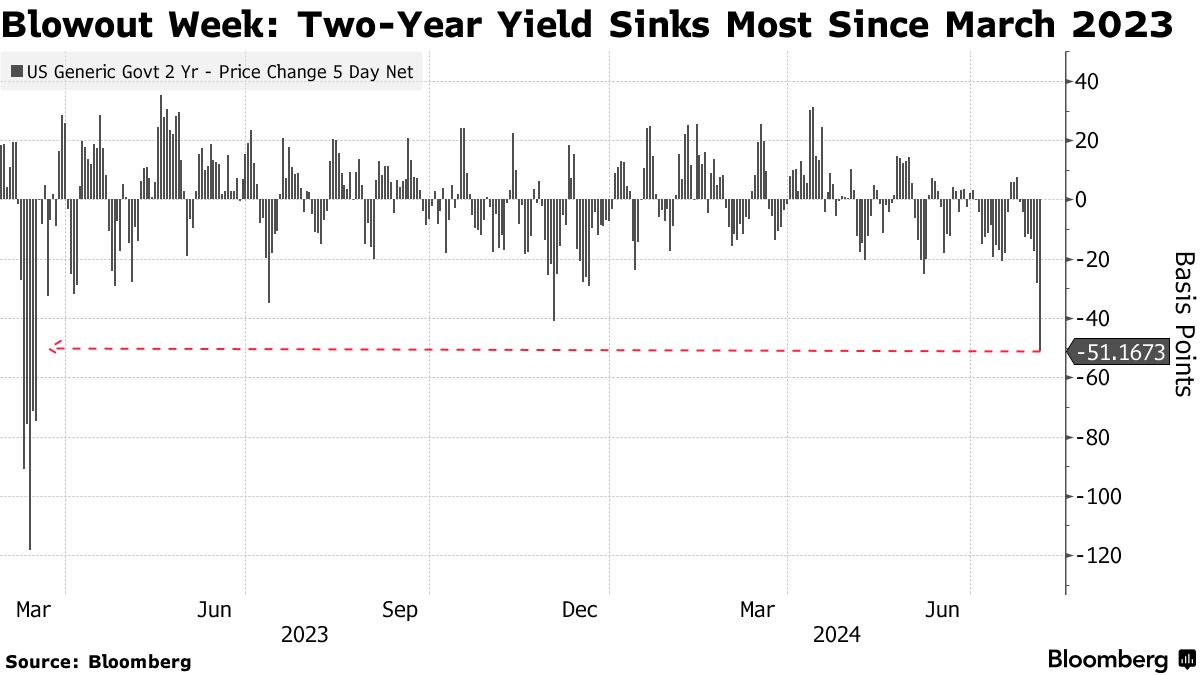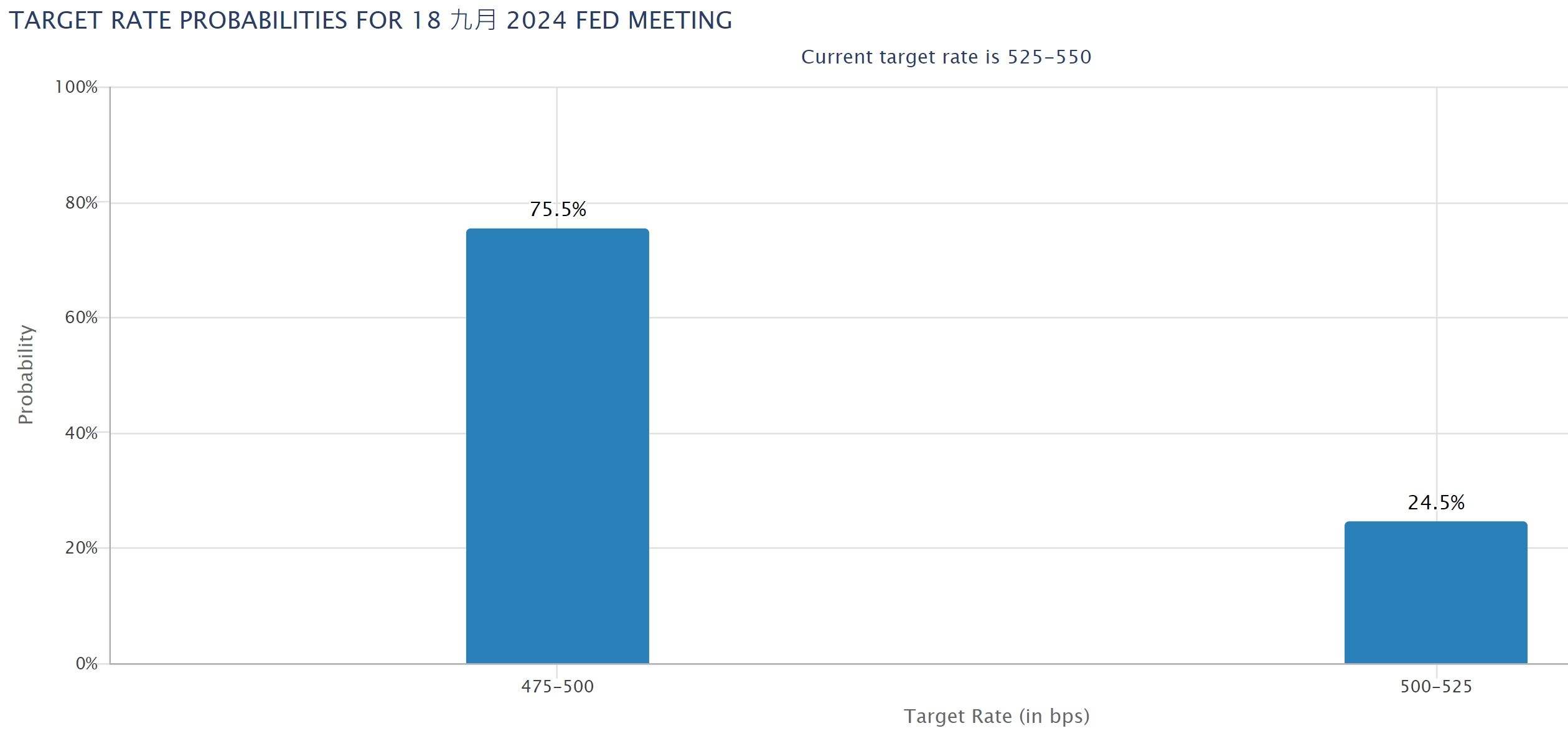The U.S. Department of Labor released the latest employment data on Friday, showing that the U.S. non-farm unemployment rate rose to 4.3% in July, a three-year high and officially triggering the Sam rule, a recession indicator. As fears of an economic recession mount, bond traders are betting that the U.S. economy is on the verge of deterioration and that the Federal Reserve will need to start aggressively cutting interest rates to avoid a recession.
2-year U.S. Treasury yields plummet
According to Bloomberg data , it has recently triggered one of the biggest gains in the bond market since the outbreak of the banking crisis in March 2023, causing the 2-year U.S. Treasury yield, which is sensitive to interest rate policies, to plummet by more than 0.5% last week. Falling below 3.8% (U.S. bond prices rose across the board), this is the first time since the global financial crisis or the bursting of the dot-com bubble that the 2-year U.S. bond yield has been so far below the Fed's benchmark rate (currently about 5.3%) .

Tracy Chen, portfolio manager at Brandywine Global Investment Management, said the market is worried that the Fed is lagging behind in its actions and the economy is moving from a soft landing to a hard landing. U.S. bonds are a good choice now because he does believe the economy will continue to slow.
Kathryn Kaminski, chief research strategist and portfolio manager of quantitative fund AlphaSimplex Group, said that given the downturn in the stock market and investors rushing to snap up bonds before yields fall further, the bond market seems to have room to continue to rise. The company's trend tracking signals have previously After being bearish on bonds, this month has turned bullish on bonds. (U.S. bond yields and prices are inversely related)
Will the Fed cut interest rates significantly?
As concerns about an economic recession have increased, Wall Street economists have begun to expect that the Federal Reserve will loosen monetary policy at a more aggressive pace. Citigroup and JPMorgan Chase predict that the Federal Reserve will cut interest rates in September and November. 2 yards.
Goldman Sachs economists also raised the possibility of a U.S. recession next year from 15% to 25%, but said there is no need to worry about a recession. The U.S. economy continues to perform well overall and there are no serious financial imbalances. The Federal Reserve will have a lot of room to cut interest rates. , interest rates can be cut quickly if necessary.
Futures traders expect the equivalent of five 1-yard rate cuts by the end of the year, suggesting they expect an unusually large 2-yard rate cut at the last three rate-setting meetings, not seen since the outbreak or credit crisis. There has never been such a large-scale interest rate cut.
The rise in U.S. Treasuries has pushed the benchmark 10-year Treasury yield down to about 3.8%, the lowest level since December. The CME Group's FedWatch tool estimates that the probability of the Fed cutting interest rates by 2 percentage points in September has reached 75.5, while the probability of a 1 percentage point rate cut has dropped to 24.5%.







